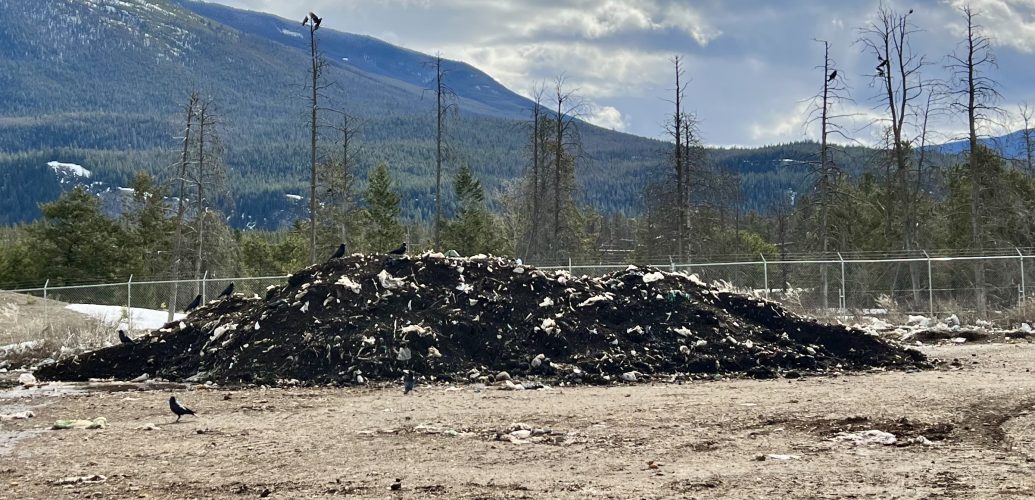In our latest podcast episode, Trash Animals, I talked to my co-host Jay about my trip to the Jasper Transfer station where I ran into a whole pile of ravens and crows. It makes sense – they are smart birds after all, and the compost is an easy, dependable food source. So dependable in fact that these corvids (that’s the name of their bird family) have likely been building up their numbers on the orange rinds and lettuce cores that litter the compost heap. Local experts speculate that this might be causing some interesting territorial behaviour, even here in town 10 km away (as the crow flies…ha ha).
Last spring, I saw more corvid conflicts than I can remember. Behind my house, ravens attacked a magpie nest, pulling it apart to get at the eggs inside. The magpies called in reinforcements from across the neighbourhood to mob the ravens and pull on their feathers to distract them from the nest. This battle went on for hours, the unrelenting squawking enough to make your ears bleed. The ravens got their meal in the end.
A week later, further down the green space, magpies pulled crow chicks out of their nests and dropped them from height onto a tree stump. Whether this was some Game of Thrones-style display to deter future nesting I can only guess, but it was gruesome. And then only days later there was the crow and magpie kerfuffle in front of my parent’s house that involved so many birds around a nest I couldn’t tell who was fighting for what. I only know that we could barely hear each other as we pretended to enjoy a pandemic beer outside in frigid temperatures.
Is some of this corvid conflict normal? Absolutely. Corvids defend their territories, eat other birds and protect their young all the time. But is the frequency of these conflicts increasing? It’s very possible. We’ll need some research to know for sure. In the meantime, spring is here, and the magpies, ravens and crows are already around, picking bugs out of the grass and staring in the window. Nesting season is upon us. Good luck, my feathered friends.
Episode 203 “Trash Animals“
Have you ever tried birdwatching at a landfill? In a world where we produce more than 2 Billion tons of garbage each year, it’s hardly surprising that those mountains of waste have developed a life of their own. From landfills to small town dumps to scraps of food left behind by tourists in the Galapagos Islands, animals are changing in big and small ways because of their proximity to human garbage. Whether it’s Darwin’s finches or Edmonton’s coyotes, animals that live near humans have a Disneyland of potential food sources. It’s also full of potential risks. Join Niki Wilson and Jay Ingram as they explore Trash Animals and how our perceptions of these creators are impacting how we treat them.

